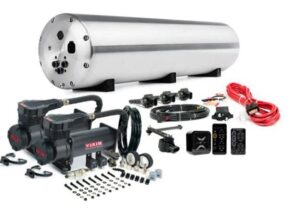Decoding Tire Measurements and How to Choose the Right Size for Your Vehicle

If you’ve ever looked at the sidewall of your vehicle’s tires, you’ve probably seen a combination of numbers and letters, such as 275/75R17, and wondered what they mean. Understanding tire measurements is crucial when it comes to choosing the right tire for your ride, whether you’re daily driving, off-roading, or hitting the track. Let’s break down what these numbers and letters represent and how to select the perfect tires for your vehicle.
Table of Contents
Breaking Down Tire Measurements
Using 275/75R17 as an example, here’s what each part of the code stands for:
- 275 – This is the tire width in millimeters, measuring from sidewall to sidewall. In this case, the tire is 275 millimeters wide.
- 75 – This represents the aspect ratio, which is the height of the tire’s sidewall as a percentage of the tire’s width. A 75 aspect ratio means the sidewall height is 75% of the 275mm width, which translates to 206.25mm.
- R – The “R” stands for radial construction, which is the most common tire construction type today. Radial tires have layers of fabric running radially across the tire to provide better strength and flexibility.
- 17 – This indicates the wheel diameter in inches. In this example, the tire fits a 17-inch wheel.
Other Important Tire Markings
Besides the primary sizing numbers, tires also feature other important markings, including:
- Load Index – A numerical code that specifies the maximum load the tire can carry at the recommended pressure.
- Speed Rating – A letter code (e.g., S, T, H, V) that indicates the maximum speed capability of the tire.
- UTQG (Uniform Tire Quality Grading) – A standardized rating for treadwear, traction, and temperature resistance.
How to Find the Right Tire Size for Your Vehicle
Choosing the correct tire size is essential for performance, safety, and fuel efficiency. Here are a few ways to ensure you’re picking the right size:
1. Check the Owner’s Manual
Your vehicle’s owner manual provides the recommended tire size based on factory specifications. Sticking to these specs ensures optimal performance and safety.
2. Look at the Driver’s Side Door Jamb
Most vehicles have a placard inside the driver’s side door jamb that lists the original tire size, recommended tire pressure, and load capacity. This is a quick and easy way to confirm the correct fitment.
3. Consider Your Driving Needs
If you plan to modify your vehicle for off-roading, towing, or high-performance driving, you might want to consider upsizing or downsizing your tires. Here’s what to keep in mind:
- Larger Tires: Provide better ground clearance and traction but may affect speedometer accuracy and fuel economy.
- Smaller Tires: Improve acceleration and fuel efficiency but might reduce overall grip and ride comfort.
4. Consult a Tire Professional
If you’re unsure about the right tire size or type for your driving needs, visiting a tire professional or shop can provide valuable guidance.
Plus Sizing vs. Minus Sizing
- Plus Sizing: Involves increasing the wheel diameter while reducing the tire’s sidewall height to maintain the same overall tire diameter. This is popular for achieving a sportier look and better handling.
- Minus Sizing: Decreasing the wheel diameter while increasing the sidewall height can enhance ride comfort and off-road capability.
Conclusion
Understanding tire measurements and how they affect your vehicle’s performance is key to making informed decisions. Whether you’re replacing worn-out tires or upgrading for better performance, always consider your vehicle’s requirements and your driving habits. Taking the time to choose the right tire size will ensure a smoother, safer, and more efficient ride on any road or terrain.
Want to read more articles like this?
Join the PowerNation Email NewsletterRead More from PowerNation
- Chapters
- descriptions off, selected
- captions off, selected
This is a modal window.









